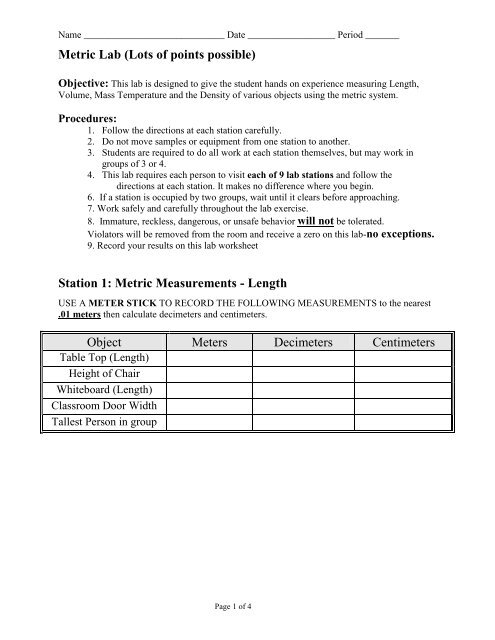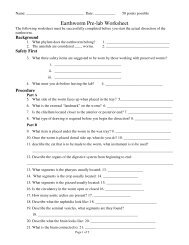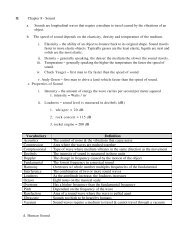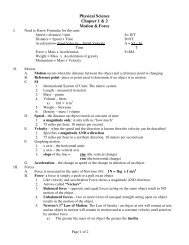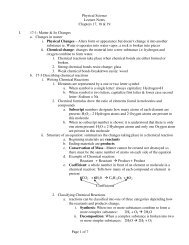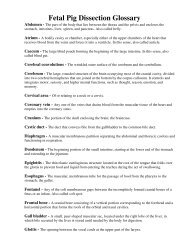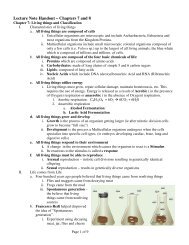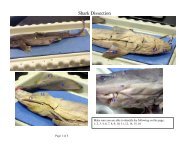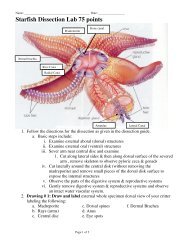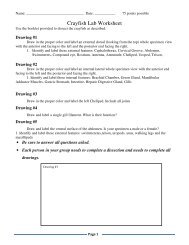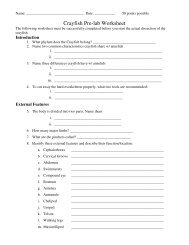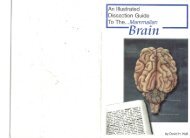Metric Lab (Lots of points possible) Station 1: Metric ... - Mr.E Science
Metric Lab (Lots of points possible) Station 1: Metric ... - Mr.E Science
Metric Lab (Lots of points possible) Station 1: Metric ... - Mr.E Science
- No tags were found...
Create successful ePaper yourself
Turn your PDF publications into a flip-book with our unique Google optimized e-Paper software.
Name _____________________________ Date __________________ Period _______<strong>Metric</strong> <strong>Lab</strong> (<strong>Lots</strong> <strong>of</strong> <strong>points</strong> <strong>possible</strong>)Objective: This lab is designed to give the student hands on experience measuring Length,Volume, Mass Temperature and the Density <strong>of</strong> various objects using the metric system.Procedures:1. Follow the directions at each station carefully.2. Do not move samples or equipment from one station to another.3. Students are required to do all work at each station themselves, but may work ingroups <strong>of</strong> 3 or 4.4. This lab requires each person to visit each <strong>of</strong> 9 lab stations and follow thedirections at each station. It makes no difference where you begin.6. If a station is occupied by two groups, wait until it clears before approaching.7. Work safely and carefully throughout the lab exercise.8. Immature, reckless, dangerous, or unsafe behavior will not be tolerated.Violators will be removed from the room and receive a zero on this lab-no exceptions.9. Record your results on this lab worksheet<strong>Station</strong> 1: <strong>Metric</strong> Measurements - LengthUSE A METER STICK TO RECORD THE FOLLOWING MEASUREMENTS to the nearest.01 meters then calculate decimeters and centimeters.Object Meters Decimeters CentimetersTable Top (Length)Height <strong>of</strong> ChairWhiteboard (Length)Classroom Door WidthTallest Person in groupPage 1 <strong>of</strong> 4
Name _____________________________ Date __________________ Period _______<strong>Station</strong> 2: <strong>Metric</strong> Measurements - LengthUSE THE CENTIMETER RULE TO MEASURE THE FOLLOWING (to the nearestmillimeter). Then convert your answer to millimeters and decimeters:Object Decimeters Centimeters MillimetersThe diameter <strong>of</strong> a QuarterPiece <strong>of</strong> notebook paper(Height)Length <strong>of</strong> a HighlighterPenDiameter <strong>of</strong> the CD-ROMMeasurements <strong>of</strong> a dollarbill (Width)<strong>Station</strong> 3: <strong>Metric</strong> Measurements – Volume <strong>of</strong> a solidUSE A MILLIMETER RULE TO CALCULATE THE VOLUME OF THE FOLLOWINGOBJECTS. MEASURE TO THE NEAREST .1 CENTIMETER:Remember the radius is ½ <strong>of</strong> the diameterThe formula for volume <strong>of</strong> a “box” is V = L x W x HThe formula for a cylinder is V = 3.14 x Height x (radius) 2“Box” Type Objects Length x Width x Height = VolumeWhiteboard EraserSystematic Theology BookBand-Aid BoxCylinder Type Objects Pi x Height x Radius x Radius = VolumeTomato Paste can 3.14Can <strong>of</strong> Soup 3.14Large Vial 3.14Page 2 <strong>of</strong> 4
Name _____________________________ Date __________________ Period _______<strong>Station</strong> 4: <strong>Metric</strong> Measurements – Volume <strong>of</strong> liquid displacedUSE THE LIQUID, GRADUATED CYLINDERS AND MEASURING CUP TO CALCULATETHE VOLUME OF THESE IRREGULAR OBJECTS USING LIQUID DISPLACEMENTTECHNIQUES DISCUSSED IN LECTURE.ObjectSmall VialLarge VialRock #1Coralmls <strong>of</strong> liquid in theGraduated Cylinderplus the objectmls <strong>of</strong> liquid inthe graduatedCylinder Onlymls <strong>of</strong> liquiddisplaced bythe object<strong>Station</strong> 5: <strong>Metric</strong> Measurements – Volume <strong>of</strong> liquidAccurately read the volume <strong>of</strong> the colored liquid in the pipettes and graduated cylinders at thisstation. You must determine the scale used by each <strong>of</strong> the measuring devices. Be sure to addthe units <strong>of</strong> measure to each answer.1. ________________________ 2. ________________________3. ________________________ 4. _______________________5. ________________________ 6. _______________________7. _________________________ 8. _______________________9. _________________________ 10. ______________________<strong>Station</strong> 6: <strong>Metric</strong> Measurements – MassUse the electronic balances to determine the grams <strong>of</strong> each sample to the nearest .1 gramsGrams Oz. Grams Oz.1. ___________ ___________ 2. ___________ ___________3. ___________ ___________ 4. ___________ ___________5. ___________ ___________ 6. ___________ ___________7. ___________ ___________ 8. ___________ ___________9. ___________ ___________ 10. ___________ ___________Page 3 <strong>of</strong> 4
Name _____________________________ Date __________________ Period _______<strong>Station</strong> 7: <strong>Metric</strong> Measurements – MassUse the Triple Beam Balance to calculate the mass <strong>of</strong> the items numberedbelow to the nearest .1 grams:1. (empty test tube)___________ 2. ________________________3. ________________________ 4. _______________________5. ________________________ 6. _______________________7. _________________________ 8. _______________________9. _________________________ 10. ______________________<strong>Station</strong> 8: <strong>Metric</strong> Measurements : Density= Mass / VolumeThe volume <strong>of</strong> the capped test tubes has been calculated to be approximately 19 mls.Subtract the actual mass <strong>of</strong> the above 10 items from the actual mass <strong>of</strong> the empty test tubeto get the actual mass <strong>of</strong> the material inside the test tube. Then calculate the density <strong>of</strong> eachitem and record your results below:1. XXXXXXXXXXXXXXXXX 2. ________________________3. ________________________ 4. _______________________5. ________________________ 6. _______________________7. _________________________ 8. _______________________9. _________________________ 10. ______________________<strong>Station</strong> 9: <strong>Metric</strong> Measurements : Density= Mass / VolumeUse the density blocks, use the electronic scales to determine the mass, use the volumeprovided and now calculate the density:1. _______________________ 2. ________________________3. ________________________ 4. _______________________5. ________________________ 6. _______________________7. _________________________ 8. _______________________9. _________________________ 10. ______________________11. _________________________ 12. ______________________Page 4 <strong>of</strong> 4


